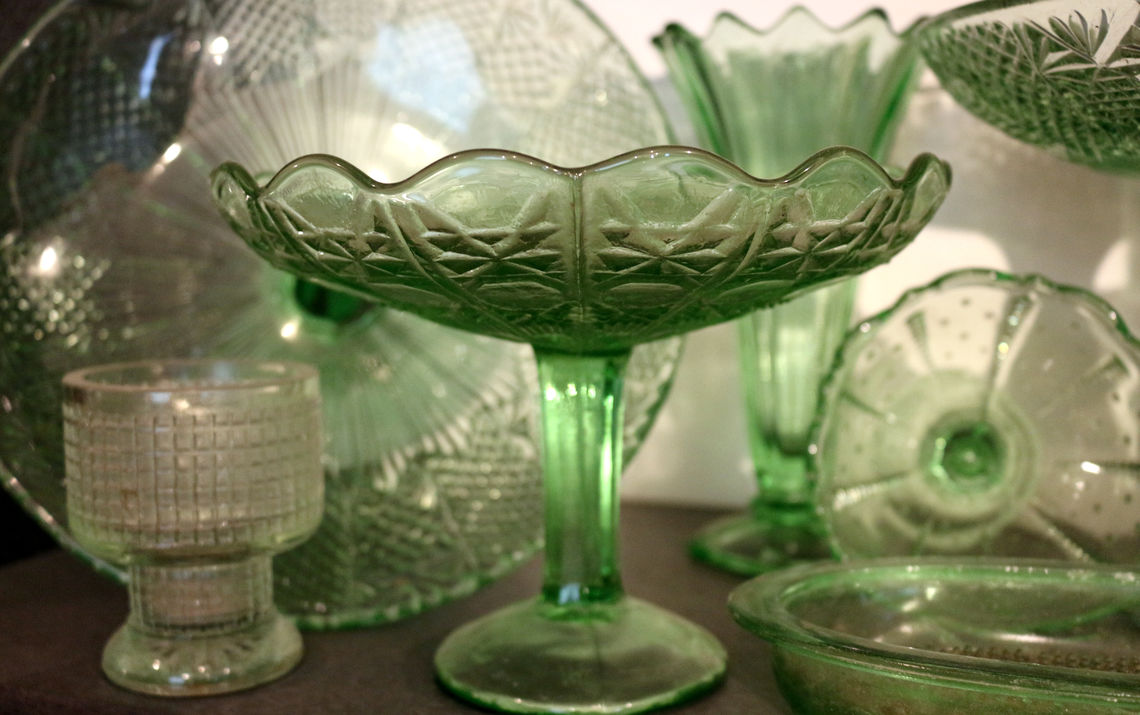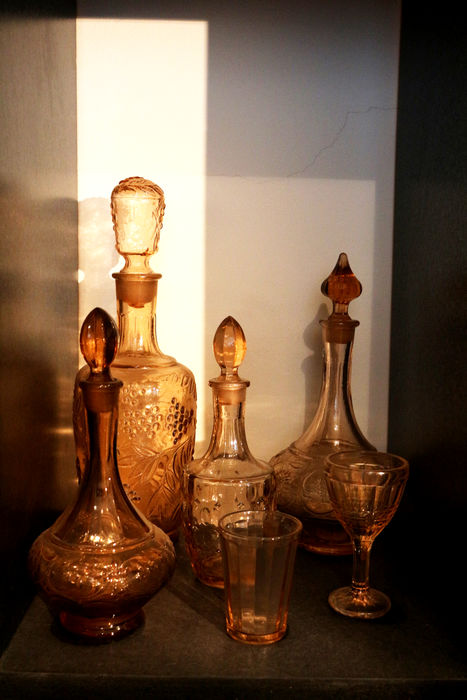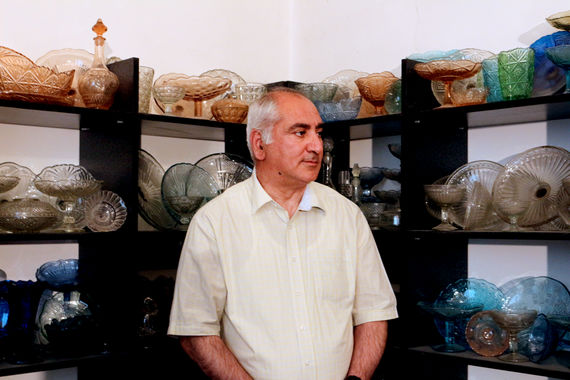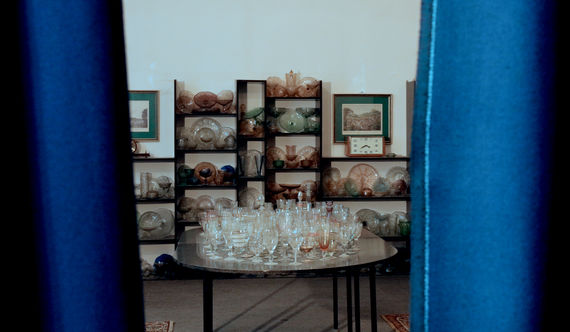

Photos by Arpine Haroyan.
“ A lot of people want to get rid of what they consider to be ‘Soviet trash.’ They think it’s unfashionable. They don’t understand the exclusivity of this glassware. ”
As you pull back the heavy dark blue curtains, a shimmering light radiating from an assortment of glassware catches your eye. You step through the threshold and enter a room consumed in light. As your eyes adjust, it feels as though time has stopped and you have taken a step back to the USSR.
An extensive collection of vintage Soviet glassware has found a home in Gyumri, Armenia’s second largest city. Boasting over 1600 pieces, the collection was carefully curated by collector Artush Mkrtchyan who is also the director of the Style Art Gallery.
Mkrtchyan says that he has roamed markets in Gyumri and Tbilisi, Georgia to find the pieces for his collection where he explains “the prices are very fair.”


The multi-faceted glassware made of hard and thick glass was manufactured only for several years, making it exceptional and valuable.
The collector says the factories producing the glassware would use any kind of glass they could find. They rejected the traditional ways of glassware production and started producing it using a simple method. They would fill the molds with melted glass, then remove the ready product and immediately ship to the stores without properly finishing them.
Although doubtful at first, he continued to explore and then made a startling discovery that changed his mind. “I found out that the glassware was designed by the best artists of the time,” he says.” In order to compensate for the low quality, the manufacturers employed intricate designs.”
“ I love glass, it has a good aura, and gives positive energy, especially when the sunrays fall on it. I believe that it’s a sign of a family’s prosperity. ”
Mkrtchyan’s collection of glassware dates back to 1943.
Meticulously designed items include sugar bowls, decanters, vases, ashtrays, plates, cake plates, candy and fruit bowls of various colors.
“This glassware is not of high quality and that’s why you’ll find individual pieces that have two colors,” Mkrtchyan laughs. “The body of the vase can be blue, and the neck can be green.”
Mkrtchyan notes that because of its low-quality, the glassware was relatively cheap. “You could buy one piece for only 40-50 Soviet kopeks (less than 5 cents US), that’s why almost every family living in the Soviet Union had at least one piece.”
“A lot of people want to get rid of what they consider to be ‘Soviet trash.’ They think it’s unfashionable,” Mkrtchyan says. “They don’t understand the exclusivity of this glassware.”

While building his collection, Artush Mkrtchyan also discovered that entire sets containing various items, with the same color and ornaments existed. “If you find only one piece in a certain color, that means that it definitely is part of a larger set,” explains Mkrtchyan. “I found a green sugar bowl once, which was a big surprise for me as I realized that there is also a set of glassware in green.”
While one can get lost in the ornaments and colors of the 1600 pieces in his collection, Mkrtchyan can easily differentiate every single item. “I love glass, it has a good aura, and gives positive energy, especially when the sunrays fall on it,” he says. “I believe that it’s a sign of a family’s prosperity.”

No one is allowed to touch the items in Mkrtchyan’s vintage collection. Every time he dusts the glassware, he rolls up his sleeves, cleans all the pieces one by one, and carefully puts them back on the shelves.
Artush Mkrtchyan’s collection is on display in the Style Art Gallery that is housed in a beautiful historic building near Gyumri’s main square. Other than his collection of vintage Soviet glassware, Mkrtchyan also collects wine glasses (about 800) and posters of old Soviet movies (more than 600).
The collector hopes that people will one day realize the value the Soviet period. “The USSR had a life of about 70 years, but it was exceptional,” Mkrtchyan says. “It was constructed on empty ground, destroying everything that existed before. It is an era that is rejected by the whole world…I believe that anything you rescue from that era has value.”

